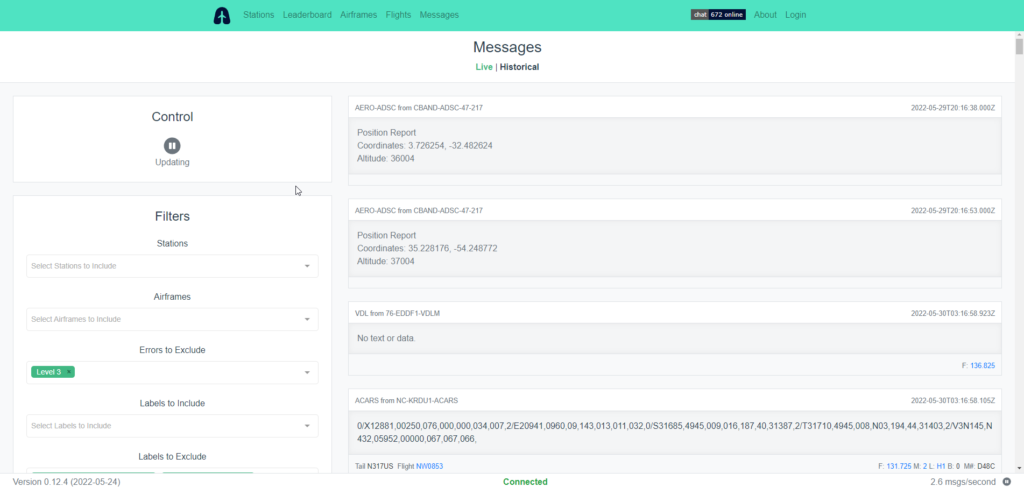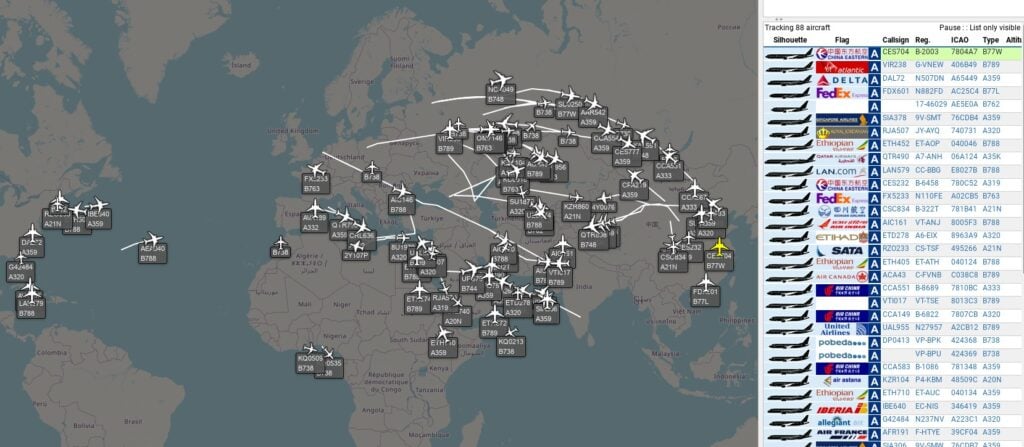Feeding ACARS Data to Airframes.io
Thank you to a contributor for submitting an article about Airframes.io, which is an ACARS/VDL2/HFDL/Satellite ACARS aggregation site. The article below it attributed to Kevin Elliott and was edited by Frank Vance. They would also like to attribute the large group or volunteers at Airframes.io.
One of the most popular hobbyist uses of SDR is receiving and decoding vehicle information data such as ADS-B for aircraft or AIS for marine traffic. Some hobbyists have been banding together to exchange their mutual data streams to provide coverage over wide geographic areas.
One of the largest and most successful such projects in the aviation realm is ADS-B Exchange (https://www.adsbexchange.com/), where over 8,000 volunteer feeders provide ADS-B data to a global aviation map in real time.
But modern air carriers have much more data to and from their aircraft than just the position information from ADS-B. In the 1970s, ACARS was created to carry that traffic. Today, ACARS is seen on its own frequencies on VHF, embedded in AVLC on the VDL2 VHF frequencies, on HF (shortwave) frequencies using the HFDL network of stations worldwide, and on satellite on both the Inmarsat (ACARS over AERO, or AoA) and the Iridium (called ACARS over Iridium, or AoI) systems.Airframes.io (https://app.airframes.io/) is a project that has been under development for a while to aggregate ACARS data in the same way ADS-B Exchange is aggregating ADS-B data. Under the capable leadership of Kevin Elliott (https://github.com/
kevinelliott), software development has progressed to the point that new feeders are actively being sought to improve the global coverage and provide a broader base of data to improve the decoding.
With a wide variety of data sources, this is a collaboration project that is open to all levels of SDR hobbyists. A simple RTL-SDR.COM unit attached to a Raspberry Pi with a smaller antenna works well with the VHF coverage. Depending on one's interest level, an HFDL feeder may require multiple SDRs with much broader frequency range, capable of reception in the sub-30 MHz bands. The L-band based Iridium AoI uses a small antenna as well, but requires a wide bandwidth SDR. Finally, reception of the C-band Inmarsat (AoA) traffic may involve a moving dish antenna of at least 6 foot diameter to obtain usable signals.What kind of data is seen in ACARS? One can observe weather conditions aloft, messages to/from the carrier operations staff, information about the origin and destination of the flight, and technical data on the aircraft operation (not all of which can be decoded at this time.) Additionally, the HFDL and satellite feeds offer location information out of sight of the traditional ADS-B coverage, such as over the oceans and polar regions.The About page at Airframes.io (https://app.airframes.io/about) has plenty of good information to help anyone get started with feeding, including links to popular software packages useful for running different types of feeders. Support is available on the #airframes-io channel (https://discord.gg/X2TgnFgsRW ) on the ADSBExhange Discord server (https://discord.gg/ aXt7KdycJk). Additional information about setting up a receiver/feeder for HFDL, Inmarsat L-band, Inmarsat C-band, and Iridium L-band is available on The Bald Geek's GitHub page: https://thebaldgeek.github.io/Consider joining with the dozens of volunteers already feeding and contributing software updates to the Airframe.io project.


